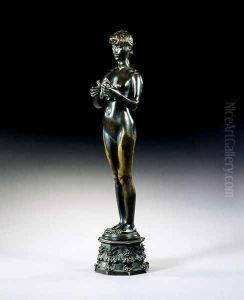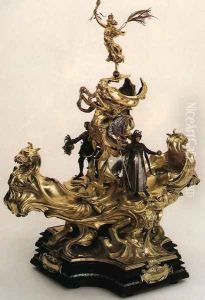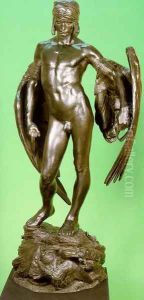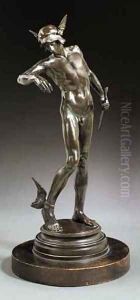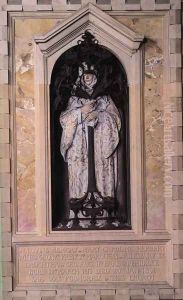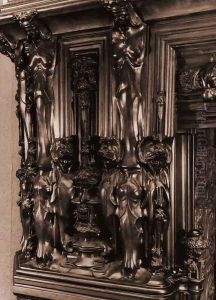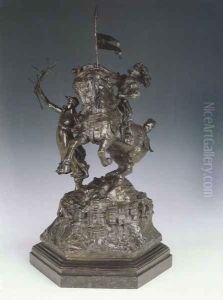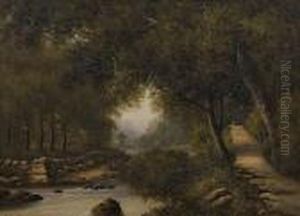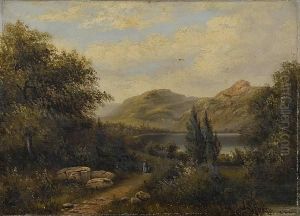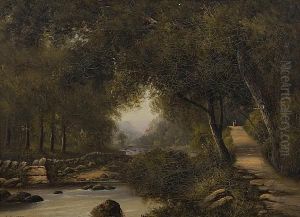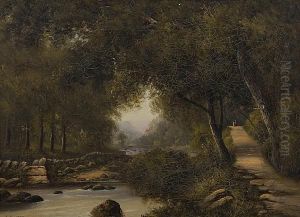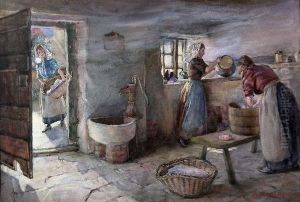Alfred Gilbert Paintings
Sir Alfred Gilbert was an English sculptor and goldsmith, recognized as one of the pioneering figures of the New Sculpture movement in the late 19th century. His work marked a departure from the neoclassical tradition, introducing more dynamic and realistic representations in sculpture. Born on August 12, 1854, in London, Gilbert was part of a generation that sought to invigorate the art of sculpture with freshness and vitality, often incorporating themes of energy, movement, and modernity.
Gilbert's education in the arts began at the Royal Academy of Arts in London, after which he continued his studies in Paris and then in Italy, exposing him to a wide range of artistic styles and influences. His early works already showed signs of his innovative approach, but it was his commission for the Shaftesbury Memorial Fountain, famously known as 'Eros' in Piccadilly Circus, London, completed in 1893, that cemented his reputation. The statue, made of aluminum and depicting the Greek god of love, was groundbreaking in both its material and its ethereal, dynamic form, demonstrating Gilbert's mastery over both traditional and novel materials.
Despite his success, Gilbert's career was fraught with financial difficulties and controversies, often due to his perfectionism and the high costs of his elaborate projects. In 1901, overwhelmed by debts, he left England and spent several years abroad in Bruges, Belgium, returning to England only in 1926 after being offered a commission for the tomb of King Edward VII in St. George's Chapel, Windsor, which he completed in 1930.
Throughout his life, Gilbert was involved in numerous significant projects and made substantial contributions to British sculpture. His works are characterized by their intricate detail, innovative use of materials, and the combination of symbolic and decorative elements. Gilbert was knighted in 1932, recognizing his contributions to the field of sculpture. He died on November 4, 1934, leaving behind a legacy that continues to be celebrated for its artistic innovation and influence on future generations of sculptors.
